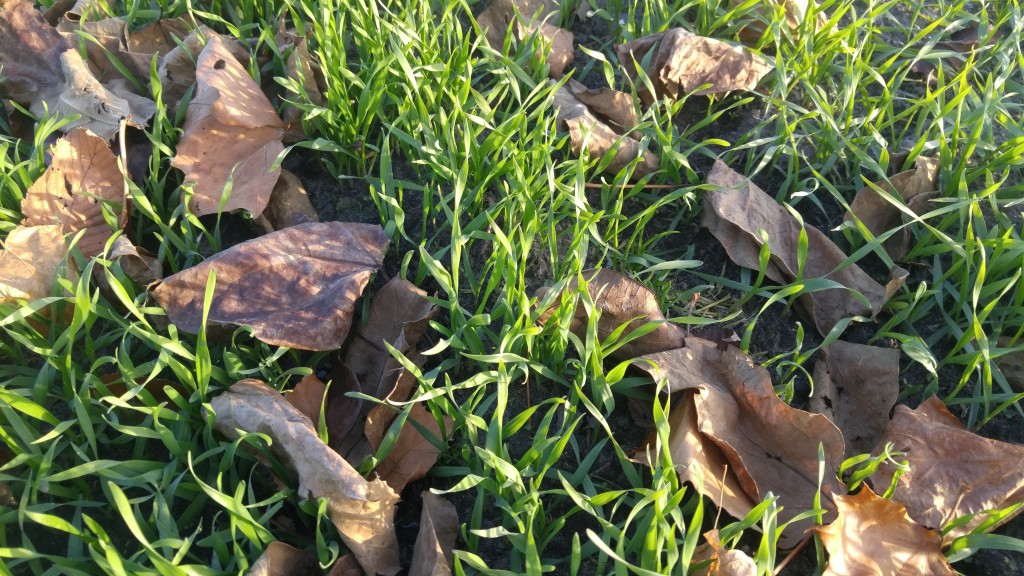Our mild autumn temperatures have accelerated the growth of fall-planted, over-wintering, cover crops.
Back in October I wrote about planting cereal rye as a cover crop in my garden. Since then the crop has germinated and made excellent progress toward establishing itself.
When rye seed germinates, it emerges out of the soil as a single shoot. As time goes by and temperatures are conducive to plant growth, leaves begin to form on the main shoot.
After a couple of weeks of growth, the plant enters the “tillering” stage of development.
Rye is a bunch grass, a self-descriptive term meaning that the plant grows in tuffs or bunches instead of spreading by over-the-ground stems called rhizomes. To spread and take advantage of growing space, the bunch grasses form extra stems called tillers. Tillers grow from the main stem of the plant.
When you look at a rye plants and see it staring to form dense tuffs, that growth you see is the tillers. Each tiller has the ability to form it own roots. In that way the plant has the ability spread vegetatively, essentially producing baby plants along side the main plant.
Farmers are concerned about encouraging tillering because the more fully-developed tillers the crop has, the greater the yield.
Extra tillering allows the plants to fill in bare areas thereby compensating for thin stands or weak germination.
My rye is is in the early stage of tillering and should be in fine shape going into the winter.
Bob
